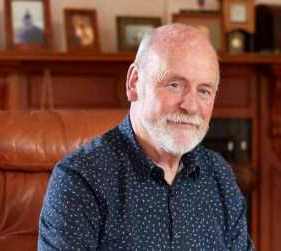In memory of Jeremy Salmond
Remuera Heritage wishes to acknowledge the huge contribution to heritage architecture, restoration and preservation. He was particularly helpful last year in assisting Remuera residents to identify the special character and heritage features of their properties in response to Council’s Plan Change 78 re housing intensification. He has left a huge legacy for New Zealand heritage.
Architect Jeremy Salmond QSO will be remembered for his work on key heritage restoration projects, which include the Auckland War Memorial Museum and Civic Theatre.
Renowned conservation architect Jeremy Salmond QSO FNZIA, winner of the 2018 NZIA Gold Medal in Architecture, died peacefully in Auckland on January 3, the day after his 79th birthday.
The architect, who founded Salmond Reed Architects, leaves a huge legacy of work – he was awarded the Queen’s Service Order in 2007 for his contribution to the heritage preservation of significant buildings throughout New Zealand.
Key historic buildings Salmond worked on include the former Auckland Jewish Synagogue and many marae, Auckland’s Civic Theatre, the Pompallier Printing House in Russell, St Matthew in-the-City Church Auckland, Sacred Heart Cathedral in Wellington, Auckland Art Gallery, the former Auckland Chief Post Office and Auckland War Memorial Museum. He was the heritage architect for the Britomart Precinct in Auckland.
Speaking to Stuff when he won the NZIA Gold Medal Award, the architect said he never really set out to become a heritage and conservation architect. “I don’t know if I had an early interest, but like many people of my generation, I grew up in an old house. And then my wife (renowned historian and environmentalist Dame Anne Salmond) and I bought a lovely old house in Devonport in 1973, and I went back to Uni for my Masters and researched New Zealand’s old houses.
“That’s when I became a heritage architect – my dream of being a whizz-bang modern architect sort of faded and I became a go-to guy on heritage buildings.”
“That’s when I became a heritage architect – my dream of being a whizz-bang modern architect sort of faded and I became a go-to guy on heritage buildings.”
Other favourite projects included Pompallier Printing House in Russell, built in 1841. “That was a three-year project – the building was starting to fall down.”
NZIA immediate-past president Judi Keith-Brown paid tribute to the architect this week: “He was a very gentle, elegant person and very approachable – he wanted to make architecture easy for the public to understand. I was at the Gold Medal ceremony in Wellington, and he was shocked. He couldn’t believe he had been selected.
“I often work on old houses, and just before Christmas I was using his book Old New Zealand Houses: 1800-1940. It’s a great source of information about different eras of houses and their detailing. It is so well written and illustrated; it’s like this dictionary for architects, and I think we all use it all the time.”
Keith-Brown said Salmond and his wife were a “fantastic couple”. “The combination of two great minds, their intelligence and passion were more than the power of two. They have made such a difference to recording history in New Zealand, and helped us all recognise the need to look after our build environment.”
Current NZIA president Judith Taylor also paid tribute to the architect this week, saying: “Jeremy was one of New Zealand’s most influential architects. His work to preserve New Zealand’s heritage buildings leaves a legacy for generations to come.
“We were proud to recognise Jeremy’s extraordinary contribution to architecture by awarding him the Te Kāhui Whaihanga Gold Medal in 2018.
“His influence has been immeasurable, through his professional work, research, publications, and his environmental legacy in the Waikereru Ecosanctuary.”
Salmond was the heritage architect on the Auckland Art Gallery project that opened in 2011.
Salmond was a grandson of renowned Dunedin architect, Louis Salmond. He grew up in Gore and studied first at Otago and then at Auckland. After completing a Bachelor’s degree, he worked in England, before resuming post-graduate studies, finally establishing his own Devonport practice.
The architect’s book, Old New Zealand Houses: 1800-1940, was initially written as his thesis for his Master of Architecture in 1982. The landmark publication is now in its 8th edition. In 2010 he co-wrote Villa: from Heritage to Contemporary.
The Waikereru Ecosanctuary (Longbush Reserve) in Gisborne was established by Salmond and Dame Anne on their own land beside the Waimata River. The ecosanctuary is home to numerous species of plants, animals and birds, many of which were on the endangered list when the couple first moved there.
“It’s a wonderful breathing space,” Salmond told Stuff in 2018. “It’s a lovely foil to Auckland life, but we work our butts off down there. That project has changed our lives and made us more aware of environmental issues, and managing the process of affecting change and understanding the way a place evolves.”
Story courtesy of Stuff : Heritage architect Jeremy Salmond leaves a huge legacy. Colleen Hawkes Jan 04 2023
